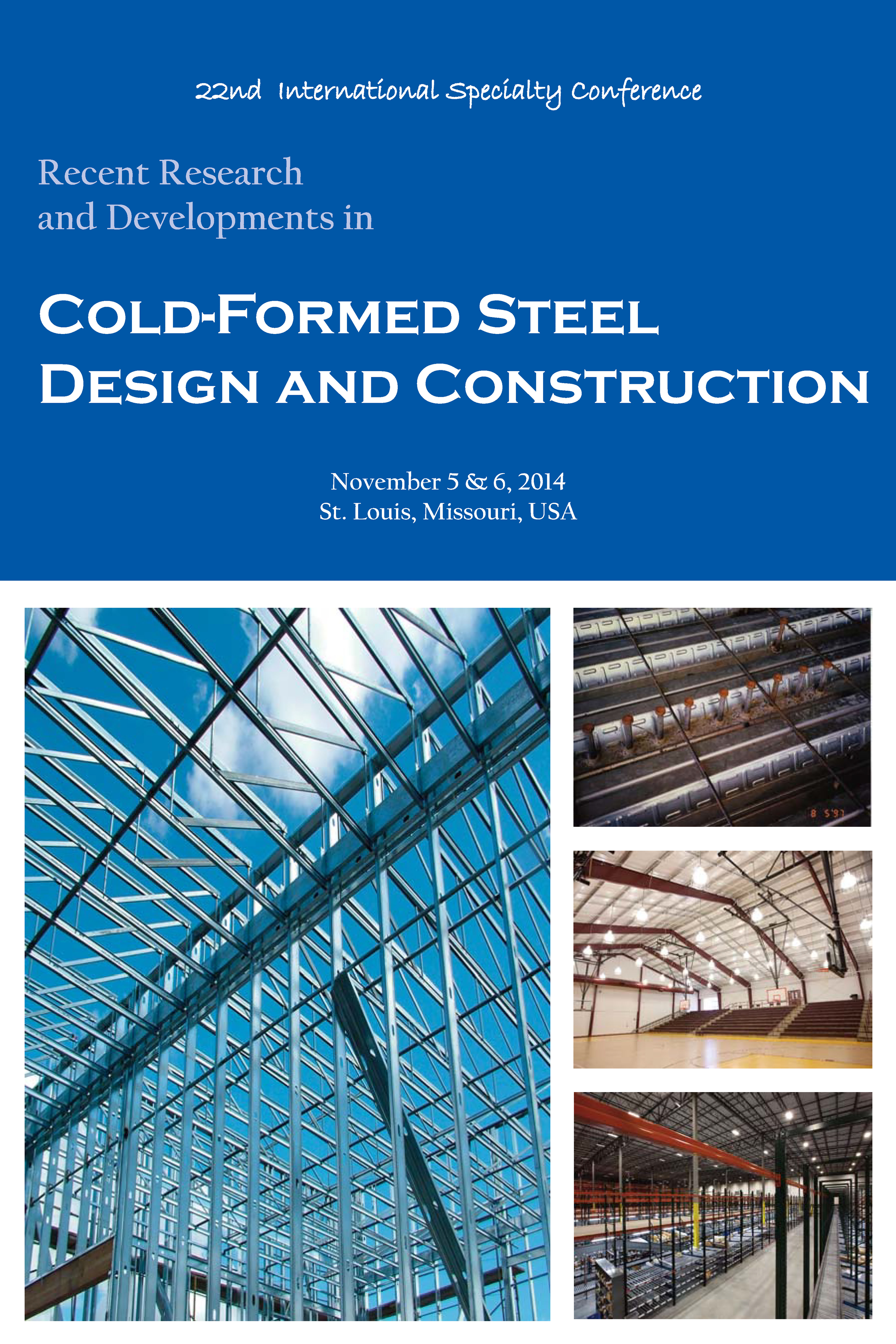Session Dates
06 Nov 2014
Abstract
In this research, the structural behavior of a new type of U.S. patented composite floor system is explored through finite element modeling. The new composite floor incorporates cold-formed (light-gauge) steel profiles as the joist on bottom, a corrugated steel deck as the formwork for concrete, a hat channel (furring channel) as the continuous shear connector and finally a concrete slab on top. All steel parts in the system are cold-formed and connected together by self-drilling fasteners. In this study, a comprehensive three-dimensional finite element modeling is performed for the composite floor system. A local bond-slip model is applied to simulate the slip of the shear connector inside the concrete slab. A nonlinear analysis is performed on the composite floor considering all different types of structural nonlinearities and the behavior of the system is monitored from beginning of loading all the way to failure. Results of finite element analysis are compared with experimental results. Further, during the course of this study, several parametric studies are conducted to determine the effect of bond-slip behavior on reducing ultimate strength and initial stiffness of such a floor system.
Department(s)
Civil, Architectural and Environmental Engineering
Research Center/Lab(s)
Wei-Wen Yu Center for Cold-Formed Steel Structures
Meeting Name
22nd International Specialty Conference on Cold-Formed Steel Structures
Publisher
Missouri University of Science and Technology
Document Version
Final Version
Rights
© 2014 Missouri University of Science and Technology, All rights reserved.
Document Type
Article - Conference proceedings
File Type
text
Language
English
Recommended Citation
Majdi, Yazdan; Hsu, Cheng-Tzu Thomas; and Zarei, Mehdi, "Finite Element Modeling of New Composite Floors Having Cold-Formed Steel and Concrete Slab" (2014). CCFSS Proceedings of International Specialty Conference on Cold-Formed Steel Structures (1971 - 2018). 2.
https://scholarsmine.mst.edu/isccss/22iccfss/session06/2
Finite Element Modeling of New Composite Floors Having Cold-Formed Steel and Concrete Slab
In this research, the structural behavior of a new type of U.S. patented composite floor system is explored through finite element modeling. The new composite floor incorporates cold-formed (light-gauge) steel profiles as the joist on bottom, a corrugated steel deck as the formwork for concrete, a hat channel (furring channel) as the continuous shear connector and finally a concrete slab on top. All steel parts in the system are cold-formed and connected together by self-drilling fasteners. In this study, a comprehensive three-dimensional finite element modeling is performed for the composite floor system. A local bond-slip model is applied to simulate the slip of the shear connector inside the concrete slab. A nonlinear analysis is performed on the composite floor considering all different types of structural nonlinearities and the behavior of the system is monitored from beginning of loading all the way to failure. Results of finite element analysis are compared with experimental results. Further, during the course of this study, several parametric studies are conducted to determine the effect of bond-slip behavior on reducing ultimate strength and initial stiffness of such a floor system.



